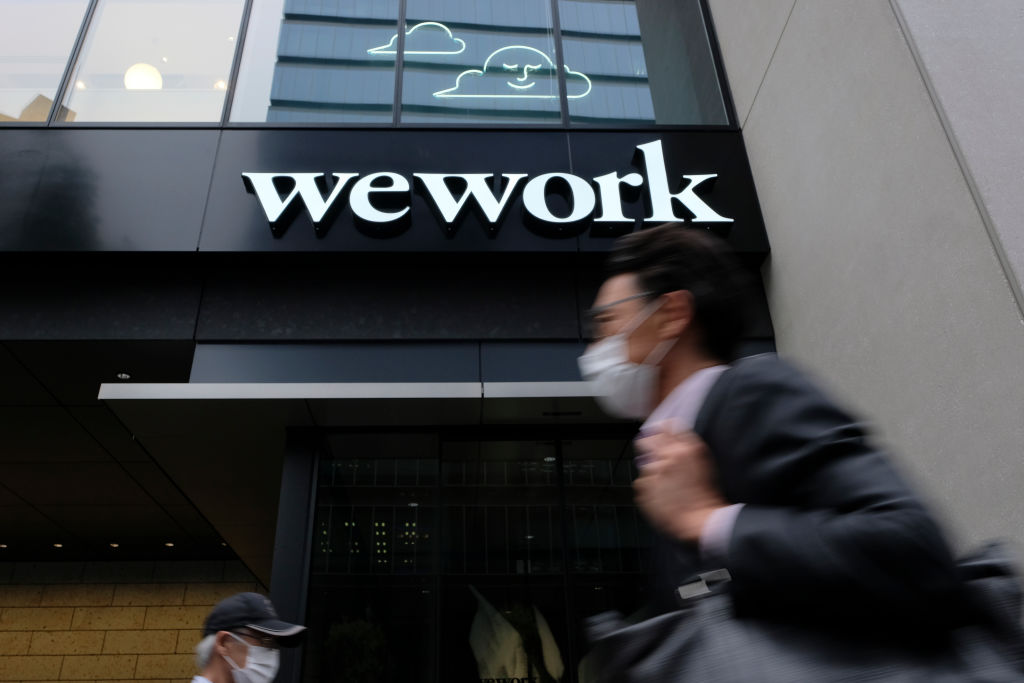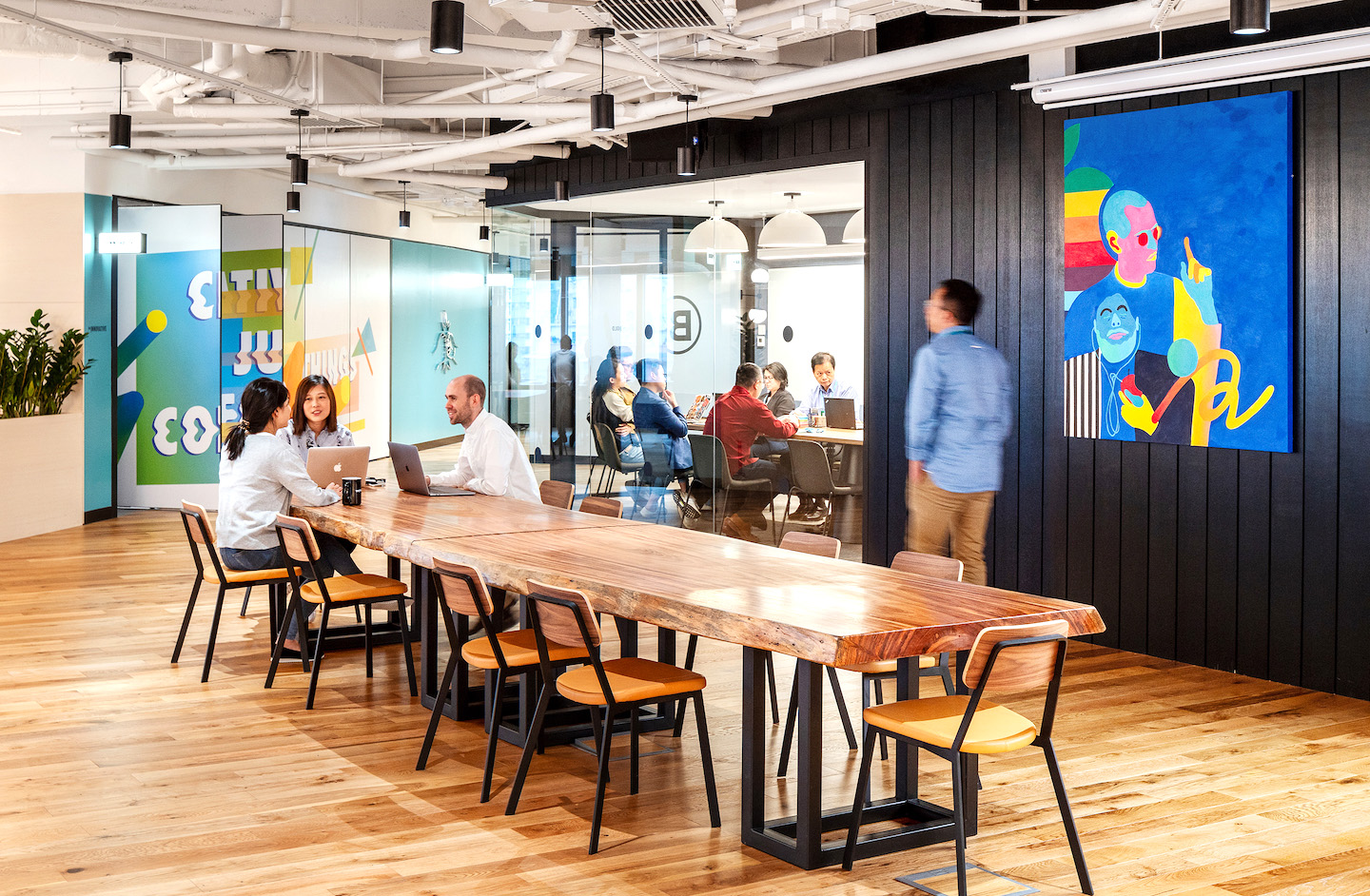Assume you’ve founded a $47 billion company. Everything is going great for you as a billionaire. Everyone is praising you. Your company’s IPO is about to be released, However, your company’s valuation drops $47 Billion to $40 billion before the IPO launch.
What would you do if you were in this situation? WeWork’s story is quite similar. It was once the world’s fastest-growing company, but it is now on the verge of collapse. WeWork have14 billion dollars in funding, world-class technology, and a great team, but the question arises in our mind. Why did this business fail? And, most importantly, what are some of the most effective business principles we can learn and apply in our own company?
So the story begins in 2008 when Adam Neumann relocated to New York after serving in the Israeli Navy. He rents an office to begin his business. And, realizing that some office space is vacant, he approaches the landlord to rent it to someone.
He met Miguel Mckelvey as a result of this, which was fortunate. They come up with the concept of a co-working facility after brainstorming together. After putting the plan into action, they refurnished the vacant office space in their building and began renting it out. GreenDesk was the company’s name.
Their company was profitable and growing at a rapid rate. Upon seeing this, their landlord informed them that he has another vacant building. Is it possible to run that building on the same business model? After two years, business was booming, so they sold the company to their landlord for $2 million. The corporation received a large sum of money, and they used it to create a new business. From there, WeWork was born.

WeWork’s valuation drops from $47 billion to $7 billion in a year. This is the only startup in the world whose value has dropped so dramatically in such a short period of time.
The question has arisen What happened with WeWork?
The startup’s worth, which peaked at $47 billion in 2019, is now on the verge of going bankrupt. WeWork was founded by Adam and Miguel in 2010. They quickly expanded WeWork after receiving $17 million in the capital in just six months.
The corporation doubled in size in a year. And in 2013, three years after launching, they become a UNICORN with a $1 billion valuation. And would you like to know what would be even more shocking? Its market capitalization will exceed $10 billion in the next two years.
Why WeWork’s valuation is increasing speedly?
Why did this company fail if everything was going well? Adam and Miguel founded WeWork based on this one idea. They felt that somewhere in the world, like-minded people could connect and accomplish something significant.
There should be a lot of locations like this, not just one. Isn’t it a fascinating concept? And why not, given that before 2012-14, no one had even considered or heard of co-working. In 2016, Dr. Ritesh Malik’s INNOVV8 brought co-working to India. A concept that brings together tens of thousands of entrepreneurs.
Many investors thought the same thing and put a lot of money into WeWork. And, given the size of the sum, WeWork is at a loss for what to do with this many investments. We understand that raising finances is difficult, so how did WeWork raise so much money so quickly and why?
You May Also Like
- Top Indian Startups To Watch in 2022
- Aman Gupta Net Worth
- What is Metaverse? Is it the right time to invest in it?
So the answer is hidden in WeWork’s Business Categorization. To understand this very carefully let’s take an example. In 2018, Amazon’s revenue was $232 Billion, from which their net profit was $10 Billion. On the other side, Walmart’s revenue was $500 Billion. And can you guess their profit? $126 Billion. Now see the game. In 2018 with $10 Billion net profit, Amazon’s valuation was $870 Billion. And with $126 Billion in profit, Walmart’s valuation was $270 Billion. The question is why is this so? If Walmart is making 10x more profit than Amazon, then why it’s valuation is half of Amazon? The reason is Business Categorization. Amazon is in e-commerce but it’s a Tech company.
And Walmart, on the other hand, is a retail corporation. Traditional business valuations, such as retail, are based on assets, revenue, and profit. However, this is not the case with technology firms. The value of a tech business is determined by its potential rather than its revenue or profit. Amazon’s stock price is high not because of profits, but because it has the potential to rule the globe. They’re still doing it today. Amazon owns 50% of the Internet through E-Commerce, Grocery, and Web Services.
WeWork was also registered as a tech firm rather than a real estate company by Adam Neumann. “WeWork is a tech firm, not a real estate company,” he used to proclaim everywhere. As a result, the company’s value increased quickly. And when valuations rise, investors become more interested. As a result, they put a lot of money into WeWork. WeWork, on the other hand, is a landlord who leases buildings, divides them into small units, and rents them out. And it has nothing to do with technology. This is a fantastic business model. And Adam Neumann’s first company, GreenDesk, was a profitable and successful business.
So the question is What’s the reason behind WeWork’s such condition?
So, what’s the problem with WeWork?
To understand this, we must first answer the following three questions.
- How does WeWork makes money?
- What went wrong?
- Why everyone was unaware?
How does WeWork makes money?

So, in terms of the business strategy, WeWork makes leasing agreements with completed office space buildings for 9-20 years. As a result, WeWork must pay the building owner rent for 9 to 20 years, depending on the lease period. WeWork renovates and refurnishes the entire office space after signing a lease on the building. And she makes it appear so lovely that you can’t help but admire it.
WeWork separates the office into individual units after renovation and rents them out to entrepreneurs and freelancers. WeWork, for example, rented a 1000-square-foot space for $1000. The corporation has now divided this into 20 pieces of 50-50 square feet each. Also, each unit can be rented for $100.
What went wrong?
From the outside, WeWork appeared to be a successful firm, but the truth was revealed during its first public offering (IPO). Some details came out in WeWork’s DRHP, or Draft Read Hearing Prospectus, suggesting the investors who were excited are now fearful about WeWork. The company’s Risky Business Model was the first thing to come out. People were aware of their company approach, but it was only after viewing data that they realized the true risk. The business concept, as you can see, is divided into two segments.
1) Expenses
In this company’s long-term lease expenditure is included i.e. 9-20 years of commitment.
2) Revenue
This includes the company’s short-term revenue commitments from clients. In simple words, Company was leasing buildings in the long term i.e. 9-20 years. But the commitments from clients are very short term i.e. 1-6 months. And if after 6 months the client goes, the company has to pay the lease amount for the next 9 years.
And the company’s figures looked something like this. The company’s revenue commitments were $4 Billion. Whereas their long-term lease commitments were $40 Billion. If you will see WeWork’s office then you will find them very beautiful. Because there are very nice common area, very nice decorated spaces.
But do you have any idea what the issue is? All of these common areas, all of these beautifully decorated areas, the area that they have rented. They don’t make any money from it. WeWork’s revenue in 2018 was $1.8 billion.
But do you know how much they spent? 3.7 billion dollars This means that WeWork lost $1.9 billion in 2018. The company was losing 15000 crores of rupees every year. Ola, Uber, Swiggy, Zomato, and Flipkart are all losing money. However, these businesses are all profitable. This means they are not recording any losses in their unit economics, i.e. per customer.
If you think of per customer in Swiggy or Zomato for example, they are profitable per order. On the other side, WeWork was losing $5000 per customer. And due to this in the first quarter of 2019, their losses reached $900 Million. These losses could be managed but through the company’s DRHP investors came across something which blew their minds.
After looking at the company’s financials, investors came to know that The company’s CEO – Adam Neumann made ‘We’ a trademark and sold it to the company for $5.9 Million. Not only this Adam Neumann had 5 houses and a private jet. And he was doing all this when WeWork was in $1.9 Million losses.
WeWork also invested in many unrelated businesses. Like Hargol which was a Food Tech company that had nothing to do with WeWork. Then they opened WeLive which was a co-living space. Then Rise is a luxury gym chain. And then We grow which is a school whose fees are $ 42,000.
This all was ok but Adam Neumann took more than $300 Million from the company for less than 1% interest. And interestingly, before 1 month of IPO launch, Adam Neumann sold his $700 Million stocks. And due to this, the trust of investors in WeWork was no more.
Now company didn’t trust the company’s business model or the company’s CEO. And time by time, the company whose valuation was $47 Billion came to less than $7 Billion. In 2016, Adam Neumann meets Softbank founder Masayoshi Son. And he gets impressed by him and says ‘WeWork can be the next Alibaba’. And with this belief, he invests $4.4 Billion in WeWork. After WeWork’s valuation drop it was important to save the company. And to save the company Masayoshi Son invested more than $5 Billion.
Why everyone was unaware?
Interestingly, I’m sure you’re wondering how no one knew these things were going on if they were.
So it has mainly 2 reasons.
1) Marketing

Adam Neumann became an expert in selling a company’s idea, a vision that many investors never questioned him. He kept on selling the business’s vision and investors didn’t check the insights. And why not from the outside company was a successful startup. Because Adam Neumann was marketing WeWork so well that before IPO filing no one came to know about it.
2) Dual Class Shares
Adam Neumann’s stock was split into two classes. Dual-class shares differed from other shares in that they had more voting power. The power of Adam Neumann’s dual-class share was 1:20. That is, his single vote was equivalent to the votes of 20 other shareholders. Other people were unable to stop Adam Huemann from doing what he was doing as a result of this.
When WeWork’s IPO failed, Softbank’s investment portfolio drowned. They also invested more than $5 billion to save the company. Then they bought Adam Neumann’s $1.7 billion stakes, fired him, and took control of the company. Today, the company is undergoing reorganization. They’re also reworking the company’s business model. WeWork was one of the first startups to receive a large sum of money. Excess money isn’t a problem, but if you don’t manage it properly, it can quickly disappear.
What are The Business model we learn from This Case Study?
1) Nothing can replace a Good Business Model
You can be the world’s best salesman, get funding from anywhere, and motivate employees as well. But the business works on a business model only. Vijay Mallya was a marketing genius. With his marketing skills, he made Kingfisher Airlines India’s 2nd largest airline. But the company’s business model had many gaps, and so the company is bankrupt today. Similarly, Adam Huemann sold the company’s vision very well.
But how to make the company’s business model strong and profitable never came to his mind. Entrepreneurs are storytellers. No entrepreneur can sell their business without a story. But do you know what keeps the company running? That is financials. If a company’s financials are strong, then it need not be dependent on investors for money. But in this case, WeWork was experiencing extreme cash burn and if investors didn’t invest, they would become bankrupt.
2) You can’t Fake something for too long.
You can’t keep doing wrong things for a long time. Adam Neumann used the company’s funds for self-comfort. About this, almost no one knew. And when during IPO launch everything came out company’s valuation falls from $47 to $7 Billion. Making money is very different from managing money. People earn money but because they don’t manage it money leaves them very fast.
Conclusion
If you like this Business case study then share and comment down below. If you want any other case study comment below or mail us we will make case study on that company.












